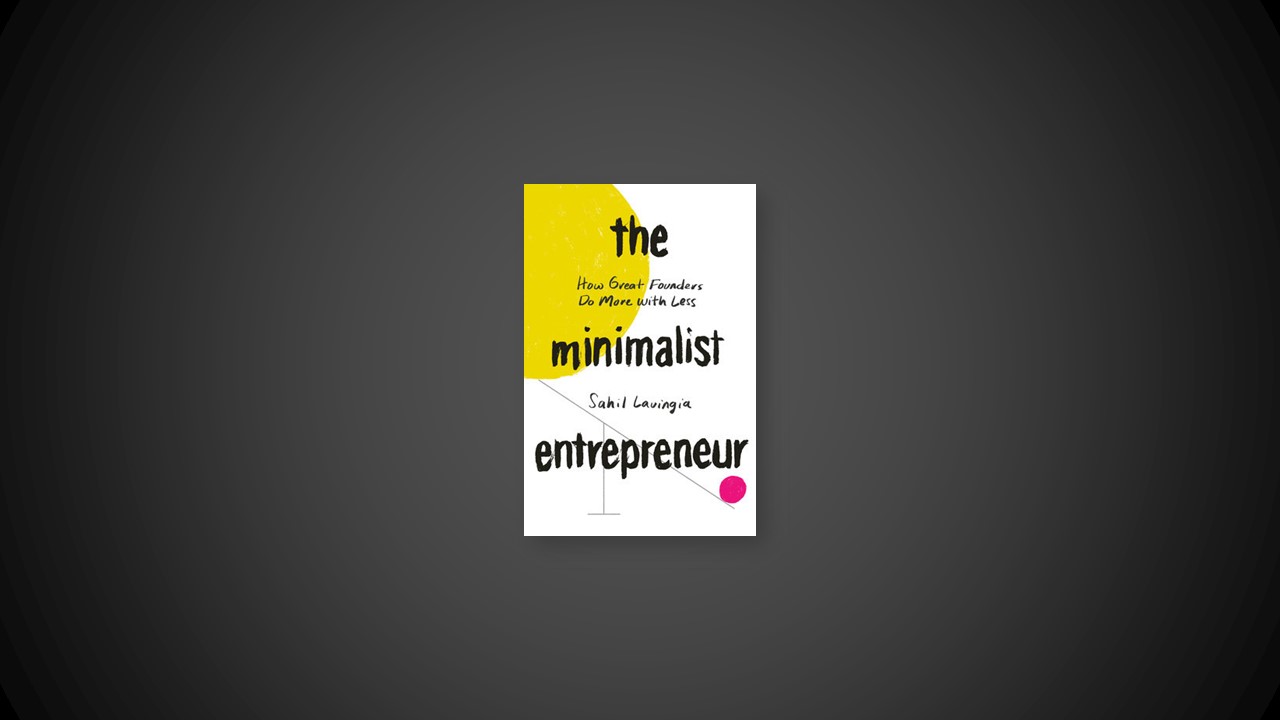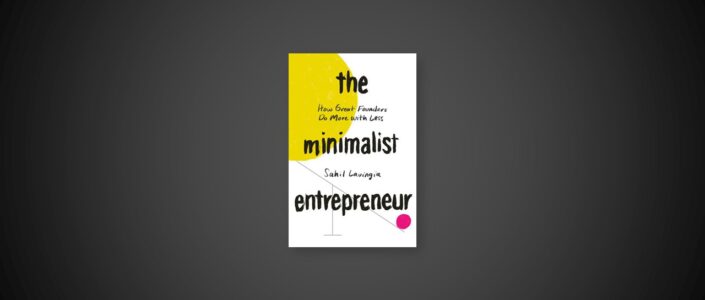The Minimalist Entrepreneur
The beginnings of all things are small. — CICERO
You don’t learn, then start. You start, then learn.
Minimalist entrepreneurs focus on getting “profitable at costs” instead of growing at all costs.
A business is a way to solve problems for people you care about—and get paid for it.
Become a creator first, an entrepreneur second.
Start with Community
It takes a village to raise a child. — AFRICAN PROVERB
It’s the community that leads you to the problem, which leads you to the product, which leads you to your business.
Once you’ve found community-you fit, start contributing with the intention of becoming a pillar in that community.
Pick the right problem (it’s probably one you have), and confirm that others have it. Then confirm you have business-you fit too.
When in doubt, always go back to the community. They will help you keep going and ultimately succeed.
Build as Little as Possible
Make SOMETHING people want. — Y COMBINATOR
Refine a manual valuable process before building a minimum viable product.
The faster the feedback loop you have with your customers, the faster you’ll get to a solution they will pay for. The fastest feedback loop will be one you have with yourself.
Before you build anything at all, see how little you can get away with charging for it. Even later, build only the things you need to build. Outsource the rest.
I define “product-market fit” as having repeat customers who sign up and use your product on their own so that you can start to focus on outbound sales.
Sell to Your First Hundred Customers
It just took off. A true viral success. — NO ONE , EVER
Launches are alluring, but they are one-off events I wouldn’t bet your business on. Instead, wait until you have a product with repeat, paying customers. Then launch by thanking them!
Selling your product (or process) directly to customers may seem slow, but it is worthwhile. It will lead to a much better product because the sales process will be less about convincing and more about discovery.
Start by selling to your family and friends before moving on to your communities and, finally, if at all, to total strangers. (The further away from you, the harder they will be to convince.)
Market by Being You
Marketing is really just about sharing your passion. — MICHAEL HYATT
Marketing is not about making headlines, but making fans.
Start by educating, then inspiring, then entertaining. Each of these three levels of content is more far-reaching than the last.
Paid advertising can work, but it has its cons. If you do decide to spend money, wait as long as you can—you’ll know much more about who you’re trying to reach that way.
Grow Yourself and Your Business Mindfully
Life is like riding a bicycle. To keep your balance you must keep moving. — ALBERT EINSTEIN
Seek “profitable confidence”: Infinite runway will maximize your creativity, clarity, and control. This is simple (spend less than you make) but not easy.
How to spend less: Do less. Don’t move too fast, don’t move to Silicon Valley, don’t get an office, don’t get too big. Grow as fast as your customers want you to—and are paying you to.
If you raise money, think about raising it from your community and turning your customers into owners.
Ultimately, most founders run out of energy before they run out of money. Maintain your energy and sanity, and that of your cofounders and coworkers, by realigning early and often on what really matters.
Build the House You Want to Live In
You can dream, create, design and build the most wonderful place in the world . . . but it requires people to make the dream a reality. — WALT DISNEY
You’ve already built one product for customers, now you’re building another: The product is your company, and your customers are your employees.
Building a company full of humans is more rewarding than building software, but it is also much harder.
Articulate your values early and often, because you will need them to avoid veering off course as you grow. (It’ll happen anyway.)
Fit is two-way: If it’s not working out for you, it’s probably not working out for them. Have the hard conversations early, as they’ll only get harder the longer you wait.
One More Thing
Let’s start at the beginning. What’s the plan? You have a business idea, hopefully. And because you picked the right community to serve, and became a pillar within it, you have a good plan of attack to get started on building your MVP (manual valuable process first, then a minimal viable product). You’re going to get to a hundred customers, and only then worry about launching!
Soon after—or maybe you’re already there—you will be profitable and in control of your destiny. You’ll learn how to stay there as you get a good grip on the legal, operational, and financial components of running your business.
You’ll craft a culture that attracts the kind of people you love working with and for. It won’t be easy, but your business will grow, and you will start to solve new problems over time.
Most important, your identity will not be wrapped up in your business. You won’t need to do anything you don’t want to, at least not for more than a couple of hours a week. Take that, Tim!
Of course, even then the journey isn’t over. It never is. It won’t be easy or quick or straightforward. It will take a lot of time, and perhaps a few attempts, but that’s okay, because you have a whole life ahead of you to figure things out. And it’s not about avoiding failure but getting to success, eventually. The longer it takes to win, the more prepared you’ll be, because you will get better every year that it takes.
One day, your life and work will align. You’ll have a purpose that unifies everything you do. You’ll get paid to do what you love. Your business will grow as long as you keep being you.
All of these things will happen. But only if you do the most important thing and . . .
Start.


